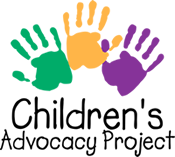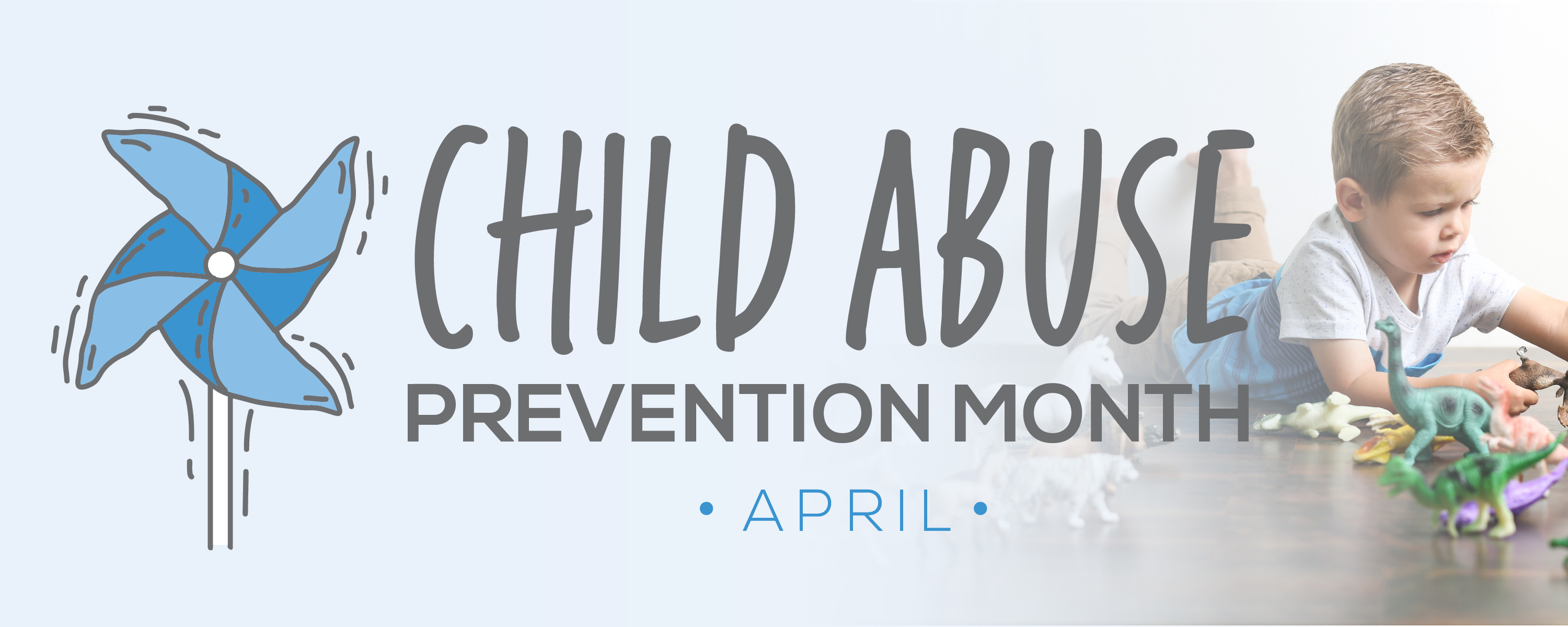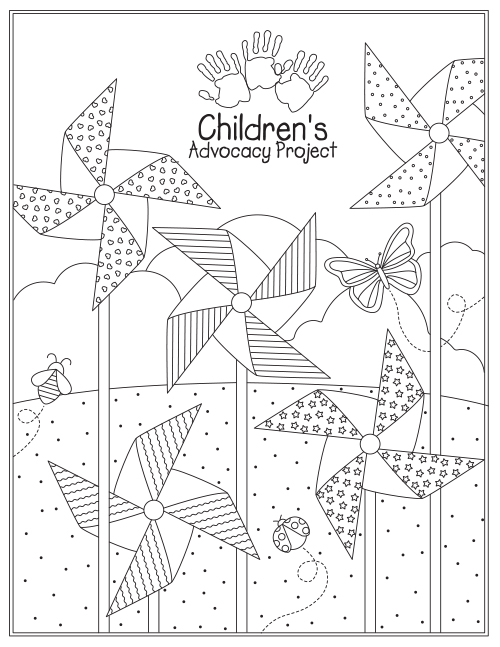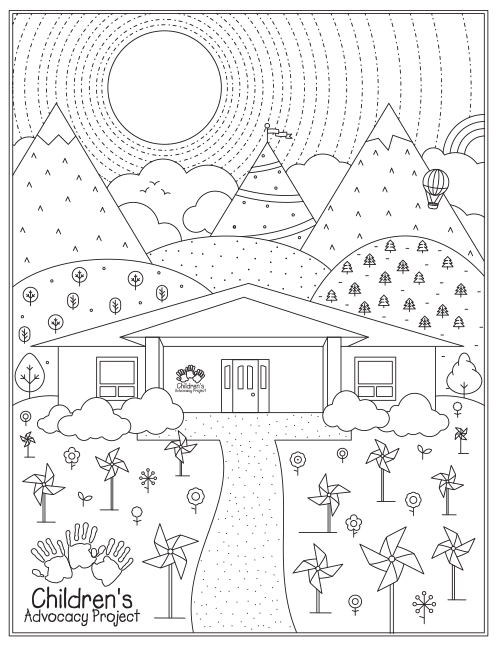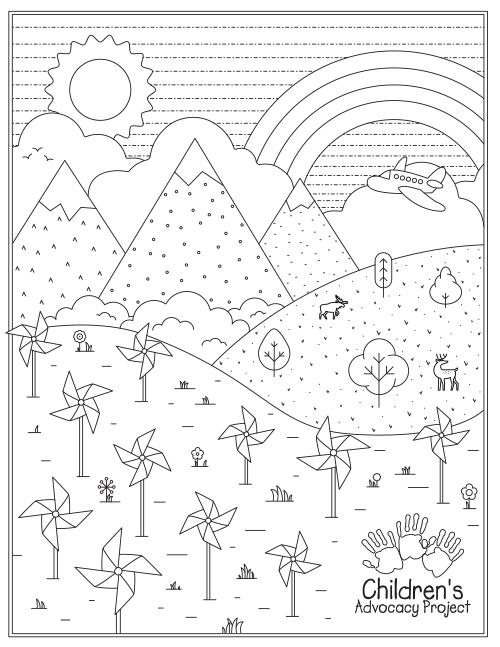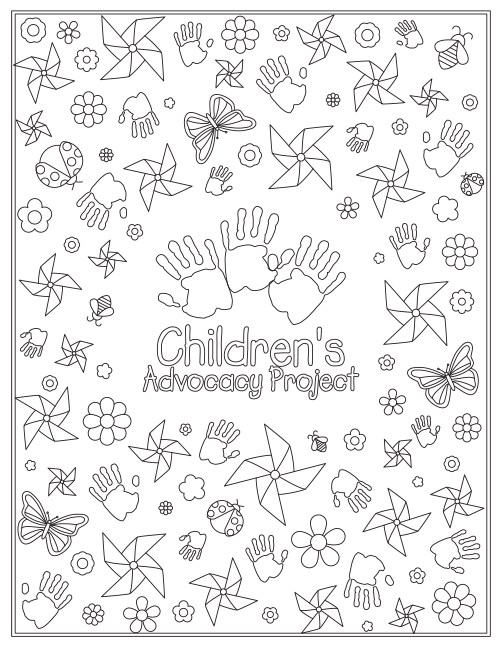April 2022 - April is Child Abuse Prevention Month, a time for communities to come together to build caring connections, supportive environments, and positive experiences for all children.
We know child maltreatment is a preventable problem. All adults play a role in building the safe, stable, nurturing homes and environments needed for the healthy development of our future generation of parents, leaders, and community members.
What is Child Abuse?
There are four major types of child abuse and neglect: Emotional, Physical, Sexual, and Neglect.
- Emotional: a pattern of behavior that impairs a child’s emotional development of sense of self-worth. This may include constant criticism, threats, or rejection as well as withholding love, support, or guidance.
- Physical: nonaccidental injury to a child, can be punching, beating, kicking, biting, shaking, throwing, stabbing, choking, hitting, burning, or otherwise causing physical harm. Injuries from physical abuse could range from bruising, broken bones, or death.
- Sexual: exposure or subjection to activities such as inappropriate touching, penetration, incest, rape, sodomy, indecent exposure, and exploitation through prostitution or the production of pornographic materials.
- Neglect: the failure of a parent or caregiver to provide for a child’s basic needs. Neglect can involve food, shelter, clothing, medical or dental care, and education. It could include failure to provide interactions that build healthy brains in children.
What is grooming?
Grooming is a method used by offenders that involves building trust with a child and the adults around them in an effort to gain access to and control the child.
Learn more about how grooming happens, the signs and ways to prevent it on our grooming blog.
What are the signs & symptoms of abuse?
Most adults think they would know if a child were being victimized, but the truth is a lot of times they don’t. The signs and symptoms of abuse can be difficult to spot. A child may not disclose about abuse (see reasons why below), that is why it is so important for us to know the red flags.
Symptoms may include:
- Withdrawal from friends or usual activities
- Changes in behavior – such as aggression, anger, hostility, or hyperactivity
- Changes in school performance, of frequent absences from school
- Depression, anxiety, or unusual fears
- Sudden loss of self-confidence
- Apparent lack of supervision
- Reluctance to leave school activities, not wanting to go home, or attempts to run away
- Self-harm or attempts of suicide
Signs of physical abuse:
- Unexplained injuries, bruising, fractures or burns
- Injuries that don’t match given explanation
Signs of sexual abuse:
- Sexual behavior or knowledge that is inappropriate for the child’s age
- Inappropriate sexual conduct with other children
- Blood in the child’s underwear
Signs of neglect:
- Poor growth or weight gain
- Poor hygiene & lack of proper clothing
- Hiding food for later
- Poor school attendance
- Lack of appropriate attention for medical problems or medical care
Why would a child not disclose?
Children often feel a sense of guilt over the abuse that is occurring. They may experience self-destructive thoughts or a loss of trust or self-esteem. A child might not even understand what is happening to them until much later in life.
It is extremely difficult for a child to disclose. Reasons a child might not tell anyone they are being abused:
- The perpetrator has told them to keep it a “secret.” Maybe they have said it is “something special the two of them are doing”
- They may have been threatened by the perpetrator. Threats can vary from physical harm to the child or their family members, even pets. Threats can also include withholding items or basic necessities such as food and water. Children can be scared of or intimated by their abuser.
- A child might not know who to tell or how to put the words together to talk about their experiences.
- A perpetrator may have manipulated the child into believing that what is happening is their own fault or that something they did “made” the perpetrator do it.
- The child may have been told that no one would believe them.
- Victims often dissociate from what is happening to them. A child deals with abuse by psychologically separating themselves from the trauma as the abusive event is happening. Sometimes, children who dissociate from abusive events do not recall the abuse until sometime in the future.
- Children can be led to believe they will get in trouble for disclosing. Sometimes they worry they will be taken away from parent, home or someone they love.
- Victims can experience shame, embarrassment or humiliation that makes them not want to disclose.
- Most child victims of abuse are being victimized by someone they know and love, making disclosure hard and confusing.
How to respond to a disclosure?
If a child trusts you with a disclosure of abuse, it is important to be prepared with a response that assures them that they are heard and safe.
Here is some advice of how to respond to a disclosure from a child or youth:
- Remain Calm & Be Strong: Do not let the child see or sense any negative emotions or reactions.
- Be An Active Listener: Thank the child or youth for sharing. Document information for the investigation without seeking additional details.
- Let The Child Lead: Do not fill in any blanks or ask leading questions. Let the child explain in their own words.
- Assure The Child: Reassure the child is not at fault and will be kept safe by trusted adults. Don’t promise outcomes such as, “the offender is going to jail”.
- Practice Self-Care: Receiving information regarding child abuse can be difficult. Recognize when you are in need of assistance following a disclosure.
- Report To Authorities: To report suspected child abuse call 1-800-422-4453.
How to help prevent child abuse?
- Minimize the opportunity: think carefully about isolated one-on-one settings and monitor internet use.
- Talk about it: speak openly and often about body safety, body autonomy, and the statistic surrounding child abuse.
- Recognize the signs & symptoms: learning what to look out for will help to see the red flags and better be able to help the children around you.
- React responsibly: remember how to respond if a child discloses and react responsibly. Everyone in the state of Wyoming is a mandatory reporter of child abuse.
- Be the trusted adult the children in your life need.
Ways to get involved during Child Abuse Prevention Month:
- Join us in planting a pinwheel garden at the Children’s Advocacy Project building (350 N. Ash, Casper, WY 82601) on Wednesday, April 6, 2022, at 10:00 a.m. A pinwheel will be planted for each victim of abuse and maltreatment we served in 2021 – 354 children, 354 pinwheels. We hope these pinwheels serve as a visual reminder of the child abuse that continues to occur in our own community.
- Plant your own pinwheel garden! Plant a garden in front of your home or business with pinwheels you already own or purchase pinwheels through the Children’s Advocacy Project (order deadline March 28, 2022).
- Color a pinwheel of your own, just click and download one of the coloring pages below. Share your creation with us on Facebook! #WYPinwheelGarden
- See a pinwheel around town? Help us plant a virtual garden on Facebook & Instagram by tagging us and #WYPinwheelGarden.
- Join us Friday, April 8, 2022 for “Wear Blue Day!” Get out your blue jeans and favorite blue tee to show your support for strong families, safe kids, and the prevention of child abuse. Post the photo of your blue and tell us why you support safe, happy childhoods using the #WYIWearBlue
- Purchase a raffle ticket for a hand-made doll house! Tickets are $20 and all proceeds benefit the Children’s Advocacy Project. Drawing will be held during our annual fundraiser event CAP, Cabernet, & Calcutta (need not be present to win).
- Join us for Make A Difference Monday at Black Tooth Brewing in Casper, WY on Monday, April 25, 2022. $1 of every pint sold throughout the whole day/night is donated to Children’s Advocacy Project
Pinwheel Garden Coloring Pages:
(click > download/print > color > share with us!):
Sources: childwelfare.gov | childsafehouse.org | mayoclinic.org
